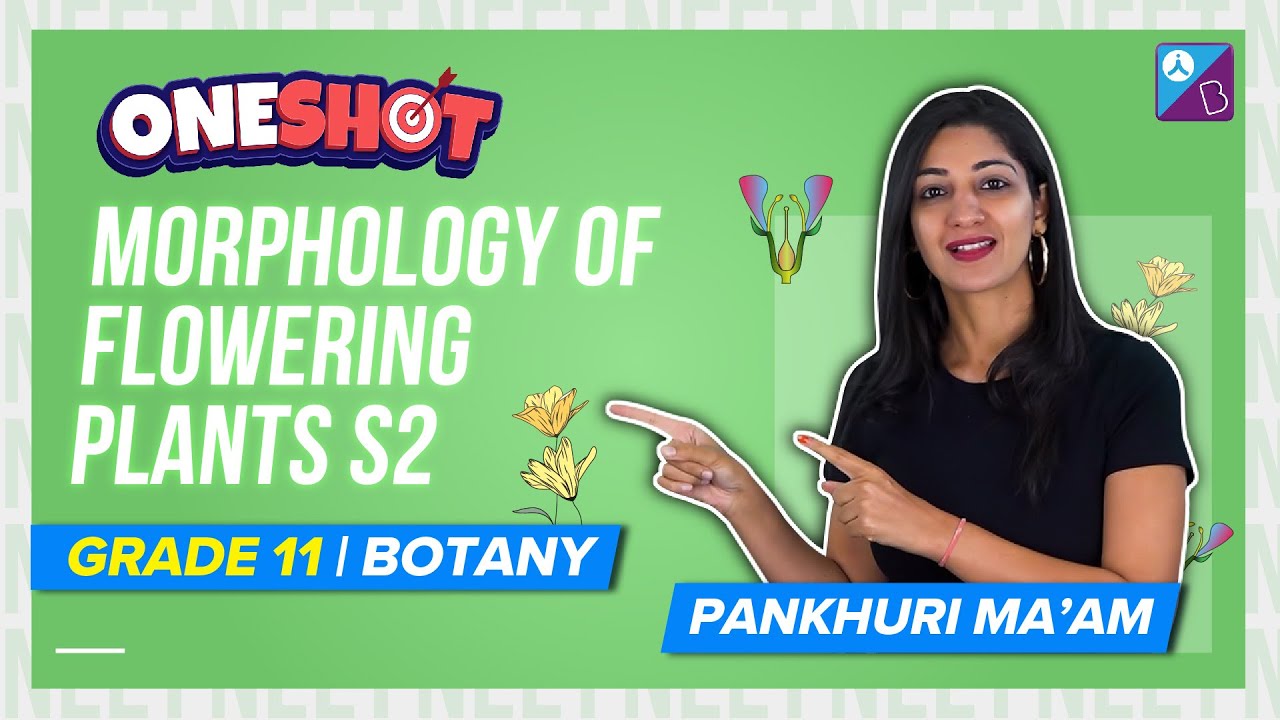The gynoecium of a flower is the female reproductive structure that is most essential for sexual reproduction. The gynoecium has ovaries that produce ovules which eventually develop into seeds and fruit.
Table of Contents
- Structure of Flower
- Gynoecium – Structure
- Placentation
- Hypogynous, Epigynous and Perigynous Flowers
- Frequently Asked Questions
Structure of Flower
A complete flower typically has four verticils or whorls. They are as follows –
- Calyx – The members that make up this whorl are called sepals. Sepals are green leaf-like structures that protect a flower in its early bud stage. Also, it is the outermost whorl of a flower.
- Corolla – The members that make up this whorl are called petals. These structures are brightly coloured and aid in pollination by attracting insects. Also, they can be seen in different shapes like tubular, wheel-shaped, funnel-shaped or bell-shaped. The corolla and calyx together make up a non-reproductive structure called the perianth.
- Androecium – They are the male reproductive structures composed of stamens. Each stamen consists of a filament or stalk and an anther. Each anther has pollen sacs that aid in the production of pollen grains.

- Gynoecium – They are female reproductive structures composed of carpels. A carpel is composed of 3 parts namely ovary, style and stigma.
Here, let’s discuss more about the structure of gynoecium and the concept of placentation.
Gynoecium – Structure
Gynoecium is the female reproductive portion as well as the innermost whorl in a flower. As mentioned earlier, carpel is the main component of gynoecium that consists of ovary, style and stigma. These carpels can be either apocarpous or syncarpous. If there is more than one carpel, and all are fused together, then it is called syncarpous. Examples – tomato and mustard. If the carpels are free, then it is apocarpous. Examples – rose and lotus.

- Stigma is a sticky portion at the distal end of a tubular structure called style. It is the primary receptive site where the pollen grains are captured.
- Style is the major structure that aids in the process of fertilisation. The pollen tube reaches the ovary via this tubular style. Thus it directs the transport of generative nuclei and helps them reach the ovary.
- Ovary is located at the swollen base of the carpel. Style is the elongated tube that links the ovary and the stigma. The ovary produces ovules which are present within chambers known as locules. Based on the number of locules, the ovary can also be classified as multilocular, unilocular, bilocular, etc.
- Stigma, ovary and style are together termed as the pistil. A pistil is considered to be a collection of one or more carpels. Also, there can be one or more separate pistils in a gynoecium.
See more: Difference between Carpel and Pistil
Placentation
The arrangement of ovules in the ovary is called placentation. The five types of placentation are as follows:
- Parietal placentation – Here the ovules develop on the inner wall of the ovary or on the peripheral parts. Example – Cucurbita.
- Axile placentation – When the placenta is axial (around an axis) and the ovules are attached to it in a multilocular fashion, then it is called axile placentation. Example – China rose.
- Basal placentation – When one or few ovules develop at the base of a simple or compound ovary, it is termed basal placentation. Example – Tomatoes.
- Free central placentation – Here the ovules are borne on the central axis and septa are absent. Example – Dianthus and primrose.
- Marginal placentation – The ovules are arranged in two rows on the margins of the ovary. A classic example of this placentation is the pea plant.

Hypogynous, Epigynous and Perigynous Flowers
Based on the position of the androecium, calyx and corolla with respect to the ovary, a flower can be classified into three types:
- Hypogynous – Here, a floral cup is absent. Thus, petals, sepals and stamens adhere to the receptacle below the gynoecium. This means that the gynoecium occupies the highest position and the other parts are present below it. It is the typical arrangement seen in most flowers and these flowers are often referred to as the ones with superior ovary. Examples – China rose, mustard and brinjal.
- Epigynous – Here, the petals, sepals and stamens adhere to the floral cup which is present at the top of the ovary. Thus, the margins of the thalamus project upwards and completely enclose the ovary and fuse with it. The other floral parts arise above the ovary. These flowers are often referred to as the ones with an inferior ovary. Examples – guava and cucumber.
- Perigynous – The gynoecium is present at the centre while the other floral parts are located on the edge of the thalamus at almost the same level. Here, the floral cup is free from the gynoecium or partly connected with the gynoecium. Also, they are often referred to as the ones with half-inferior ovaries. Examples – rose, plum and peach.
What Is a Floral Cup?
A floral cup is a unit where the basal parts of the stamens, calyx and corolla adhere to form a cup-shaped structure. It is also known as hypanthium or floral tube.
Recommended Video:

Also Check:
Keep exploring BYJU’S Biology to learn more such exciting topics.
